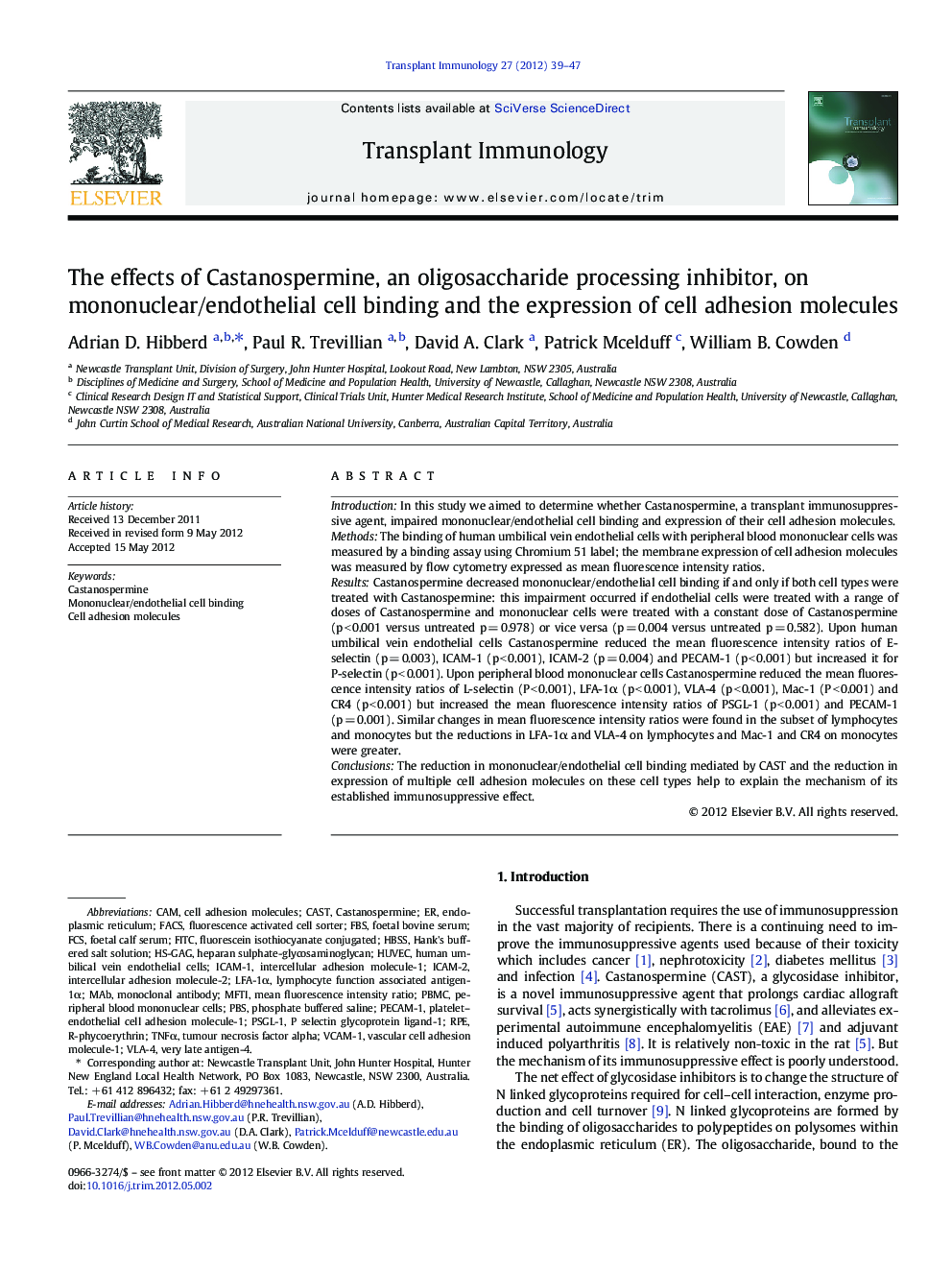| Article ID | Journal | Published Year | Pages | File Type |
|---|---|---|---|---|
| 3392146 | Transplant Immunology | 2012 | 9 Pages |
IntroductionIn this study we aimed to determine whether Castanospermine, a transplant immunosuppressive agent, impaired mononuclear/endothelial cell binding and expression of their cell adhesion molecules.MethodsThe binding of human umbilical vein endothelial cells with peripheral blood mononuclear cells was measured by a binding assay using Chromium 51 label; the membrane expression of cell adhesion molecules was measured by flow cytometry expressed as mean fluorescence intensity ratios.ResultsCastanospermine decreased mononuclear/endothelial cell binding if and only if both cell types were treated with Castanospermine: this impairment occurred if endothelial cells were treated with a range of doses of Castanospermine and mononuclear cells were treated with a constant dose of Castanospermine (p < 0.001 versus untreated p = 0.978) or vice versa (p = 0.004 versus untreated p = 0.582). Upon human umbilical vein endothelial cells Castanospermine reduced the mean fluorescence intensity ratios of E-selectin (p = 0.003), ICAM-1 (p < 0.001), ICAM-2 (p = 0.004) and PECAM-1 (p < 0.001) but increased it for P-selectin (p < 0.001). Upon peripheral blood mononuclear cells Castanospermine reduced the mean fluorescence intensity ratios of L-selectin (P < 0.001), LFA-1α (p < 0.001), VLA-4 (p < 0.001), Mac-1 (P < 0.001) and CR4 (p < 0.001) but increased the mean fluorescence intensity ratios of PSGL-1 (p < 0.001) and PECAM-1 (p = 0.001). Similar changes in mean fluorescence intensity ratios were found in the subset of lymphocytes and monocytes but the reductions in LFA-1α and VLA-4 on lymphocytes and Mac-1 and CR4 on monocytes were greater.ConclusionsThe reduction in mononuclear/endothelial cell binding mediated by CAST and the reduction in expression of multiple cell adhesion molecules on these cell types help to explain the mechanism of its established immunosuppressive effect.
► Castanospermine reduced mononuclear/endothelial cell binding. ► Treatment of both cell types was necessary. ► On HUVECs it reduced MFIRs of E-selectin, ICAM-1, ICAM-2 and PECAM-1. ► On PBMCs it reduced MFIRs of L selectin, LFA-1, VLA-4, Mac-1 and CR4. ► These factors partly explain its transplant immunosuppressive effect.
